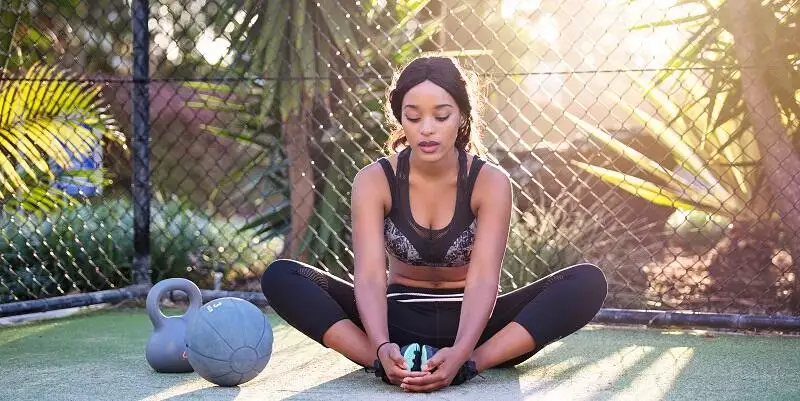How To Become Your Own Personal Trainer
Hiring a personal trainer is an excellent way to ensure you will get your workouts done. If you are currently working with a personal trainer or have had one in the past, you probably realized that one of the benefits of hiring a trainer is ACCOUNTABILITY. When you schedule and pay for the training session and commit to working hard for that hour, you are much more likely to do the work if you have a trainer to keep you accountable. As a personal trainer, I know first-hand the value of working with a dedicated fitness expert to help individuals reach new goals. Trainers are a valuable resource in achieving your fitness goals, giving instruction on correct form, exercise modifications, and ideally helping you create a lifelong love of exercise. I believe in the value trainers BUT also want to share that not having a trainer should not slow you down in moving forward with your fitness goals. YOU can be your own personal trainer by following the steps below! This is my challenge to you to help you become a healthier version of yourself during these challenging times!
Gyms are reopening, but in some states, COVID-19 cases are increasing, and many of us may not feel comfortable going back to the gym yet. The added expense of hiring a trainer at the gym or to come to your home is not your only option. Use the five training tips below to get and stay on track with your workouts:
1. Educate yourself.
Learn what works best for you. If you hate running, don’t do it. Make a list of the activities you enjoy doing or used to enjoy doing (dancing, tennis, swimming, yoga, hiking) Link something you enjoy with the activity (only watch your favorite show while on the elliptical). Challenge yourself to make your fitness program FUN! The best form of exercise is the one you will keep doing!
2. Assess.
What’s your starting point. Fitness Assessment is a crucial first step to learning about where you really are and will allow you to chart progress toward your goals. The following three fitness tests help assess your current strength and cardiovascular endurance. The results of these assessments provide a baseline from which you can track your progress. Re-test yourself every four weeks to see your progress.
*Always check with your doctor before starting this or any exercise program.
Push-Up Test
Measures the muscular endurance of the upper body.
Equipment: Stopwatch
Preparation: Warm up by doing a few marches and arm circles.
Set up:
- Place both hands on the floor, about shoulder-width apart, with fingers pointed forward.
- Lift your knees so that your weight is supported on your palms and toes. Your legs, buttocks, and back should be in a straight line. (If this is too difficult, keep your knees on the floor and do a modified push-up, with your body in a straight line from knees to ears. Let your feet come up off the floor and cross them at the ankles or leave them slightly apart.)
- The push-up begins in this “up” position. Bend your arms and keep your back straight as you lower your body to the floor until it is about 3-inches off the floor.
- Push back up to the “up” position. This counts as one complete push-up.
- Perform as many correct push-ups as you can in one minute. Any resting should be done in the “up” position.
How many did you do? _____
Squat Test
Measures lower body muscular endurance.
Equipment: Stopwatch and a sturdy chair that makes your knees bend at right angles when you sit.
Set-Up:
- Stand in front of a chair, facing away from it, with your feet shoulders width apart.
- Squat down and lightly touch the chair with your backside before standing back up.
- Keep doing this for 90 seconds or until you are fatigued.
- Record the number of squats completed.
How many did you do? _____
12-Minute Aerobic Test
Measures cardiovascular endurance.
Equipment: Comfortable walking shoes, watch with the second hand, flat area to walk.
Procedure:
- Walk, jog, or run. Use your phone to track your time and distance.
- Record the distance you covered.
- Cooldown by walking at a comfortable pace for several minutes.
What distance did you cover? _____
3. Set goals. Create a strategic plan.
Choose a definite start date (why not today?).
Schedule how often and how long you will exercise. Plan ahead. Set weekly, monthly, and yearly fitness goals. Incorporate cardio, strength, and flexibility into your training week. Find an accountable partner or use an app like to stay on track.
4. Use free or almost free Apps to train you and keep track of your progress.
Map My Fitness by Under Armour
Personalized workout routines (beginner to advanced) and track your progress.
Nike Training Club
Filter workouts by categories like a specific muscle group, length of workout and type, strength, cardio, yoga, and mobility.
Yoga for Beginners
Beginner-friendly yoga classes with a variety of yoga styles to choose from.
5. Acknowledge your successes & recommit to achieve new goals.
As a personal trainer, I’m aware of the negative self-talk that is common when we are working out; I try to remind my clients to appreciate their “wins” big and small.
Small steps and consistency always lead to gains, acknowledge these successes, be good to yourself, appreciate your body, and your body will allow you to feel better each day!
When goals are met, celebrate the progress and set new goals.
You do not need a personal trainer or anyone else to achieve your fitness goals.
You do need a strategic and realistic fitness plan, motivation, and an understanding of your current fitness level. Ultimately you are the one who cares most about your health. Feeling your best will help you in all areas of your life! This is a challenge to be your own trainer for at least 21 days and see how you feel, keep a journal of your work, use GRATITUDE when you have worked out, encourage yourself just as a trainer would, and stay accountable to YOU!




